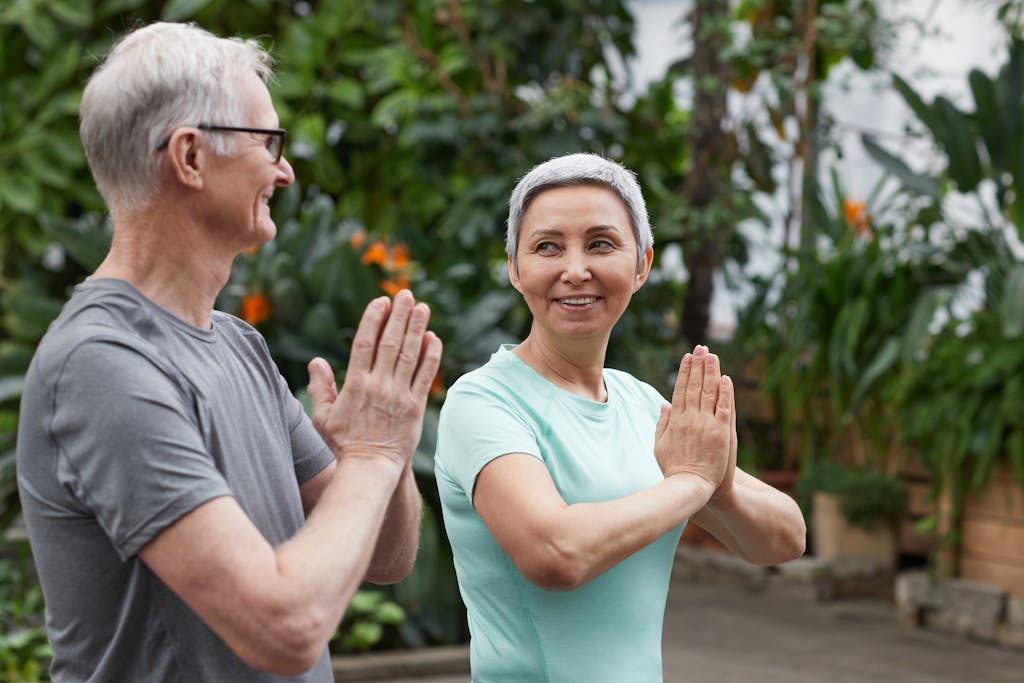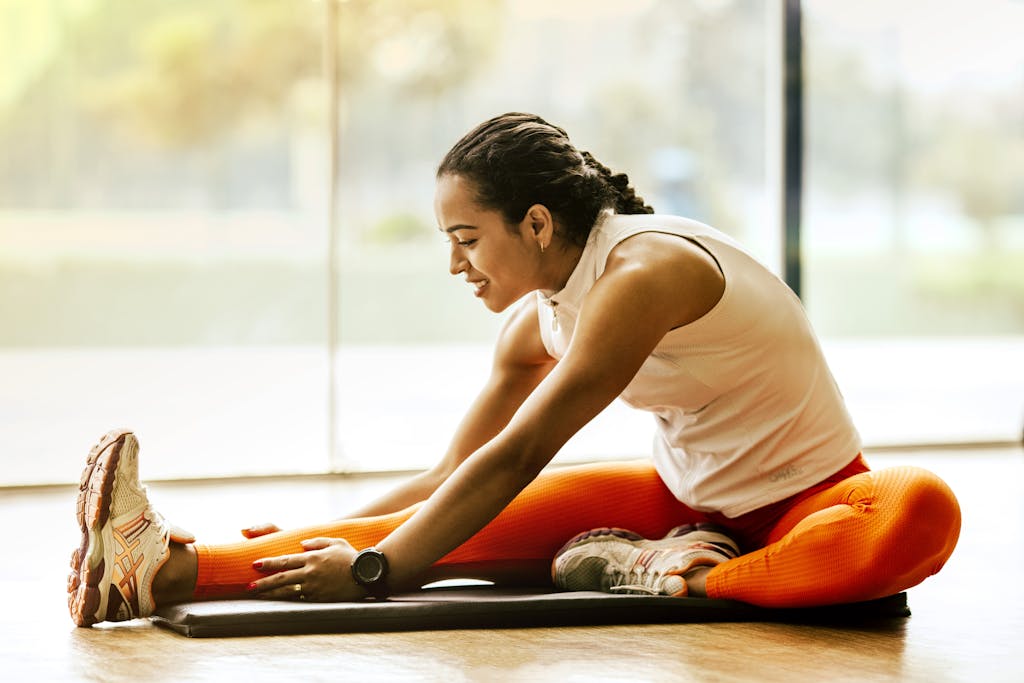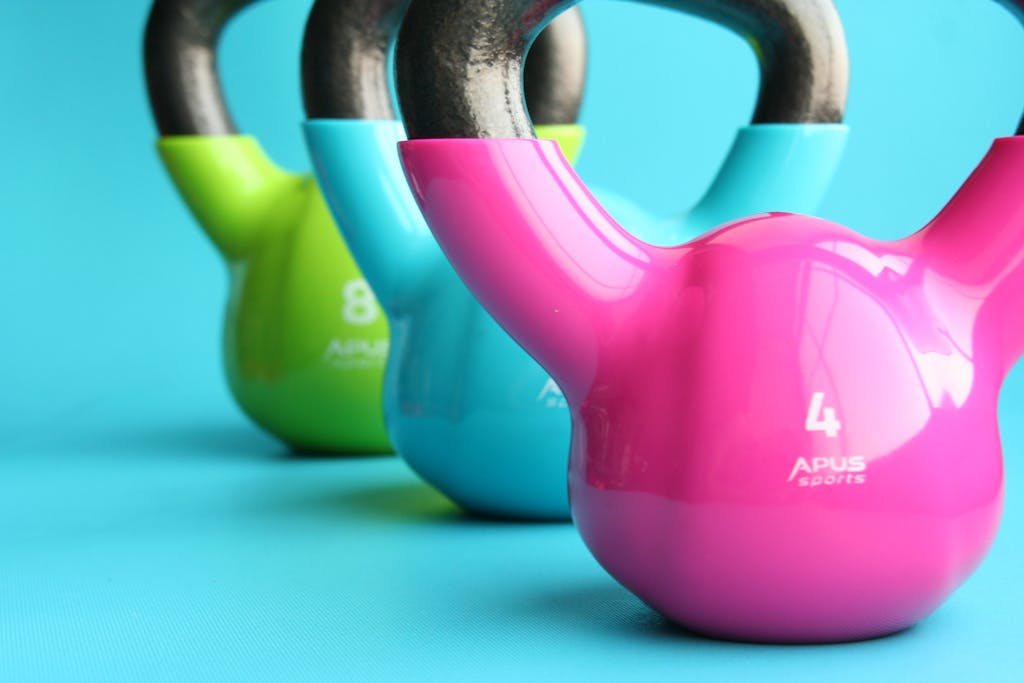Osteoarthritis, often cloaked in the guise of everyday stiffness and discomfort, is a condition that affects millions globally. It’s a degenerative joint disease characterized by the wearing away of cartilage, the cushiony tissue at the ends of bones. This gradual degradation leads to symptoms ranging from mild pain to debilitating immobility, primarily in joints like the knees, hips, hands, and spine. While there’s no cure, understanding osteoarthritis is crucial as it lays the foundation for effectively managing the condition. One such powerful tool in this management arsenal is exercise. Contrary to the fear that movement might exacerbate pain, the right exercises for osteoarthritis can significantly alleviate symptoms, enhance joint function, and improve overall quality of life.

Embarking on a tailored exercise regimen might seem daunting, especially when joints are tender and movements are stiff. However, incorporating specific exercises for osteoarthritis relief—such as low-impact cardiovascular activities like walking, swimming, and cycling—has been shown to be immensely beneficial. Strength training helps in building muscle support around afflicted joints, while flexibility and stretching exercises enhance mobility and reduce that bothersome stiffness. Balance and stability routines are vital for preventing falls, enhancing coordination, and boosting confidence in movement. Aquatic exercises, with their buoyant and gentle resistance, are particularly advantageous, offering a refreshing way to exercise without placing undue stress on the joints.
It’s essential though, to venture into this journey with caution. Consulting a healthcare provider before initiating any exercise plan ensures it’s tailored to one’s specific needs and abilities. Starting slow, with gradual intensity increments, proper warm-ups and cool-downs, and attentive listening to your body’s signals can prevent overexertion and injury. Supportive gear and maintaining correct posture are also critical in safeguarding joints and maximizing the benefits of your workouts.
In essence, while osteoarthritis poses significant challenges, an informed and mindful exercise regimen can turn the tide, offering much-needed relief and an empowered approach to managing this condition.
Understanding Osteoarthritis and Its Impact on Health
Definition and Causes of Osteoarthritis
Osteoarthritis, often abbreviated as OA, is a degenerative joint disease characterized by the breakdown of cartilage, the flexible, rubbery tissue that protects the ends of bones and facilitates smooth movement. When cartilage wears down, bones can rub against each other, leading to pain, swelling, and reduced joint motion. While aging is the primary risk factor for osteoarthritis, it can also result from joint injuries, repetitive stress on the joints, obesity, genetics, and certain metabolic diseases. Osteoarthritis most commonly affects weight-bearing joints such as the knees, hips, and spine, as well as the hands.
Symptoms and Common Areas Affected by Osteoarthritis
Symptoms of osteoarthritis can vary in severity from person to person but typically include pain, tenderness, stiffness, and loss of flexibility in the affected joints. Other symptoms may include a grating sensation during joint movement (crepitus), bone spurs, and swelling. The knees and hips are particularly susceptible due to the high levels of stress they endure. The hands, fingers, and spine can also be commonly affected, making everyday activities challenging.

Importance of Exercise in Managing Osteoarthritis Symptoms
Exercise is a cornerstone in the management of osteoarthritis symptoms. Engaging in regular physical activity can help alleviate pain, improve joint function, and enhance the overall quality of life for individuals with osteoarthritis. Here’s why exercise is beneficial for those managing osteoarthritis:
- Pain Reduction: Regular movement can help reduce pain and lessen the reliance on pain medications. It stimulates the release of endorphins, which are natural painkillers produced by the body.
- Improved Joint Function: Exercise strengthens the muscles surrounding the joints, providing better support and reducing strain. Stronger muscles mean greater joint stability and less discomfort during movements.
- Weight Management: Maintaining a healthy weight reduces stress on weight-bearing joints, particularly the knees and hips. Regular exercise aids in weight control, thereby mitigating additional wear and tear on the joints.
- Enhanced Flexibility: Stretching and flexibility exercises help maintain and improve the range of motion. They prevent stiffness, making daily activities less painful and more manageable.
- Increased Blood Flow: Physical activities boost blood circulation, which nourishes the joint tissues and promotes faster healing if there are minor injuries or inflammation.
It’s essential to choose the right type of exercises for osteoarthritis. Low-impact activities that do not excessively strain the joints are particularly beneficial. Incorporating a variety of exercise forms—such as aerobic, strength training, flexibility, and balance exercises—ensures a well-rounded approach to managing osteoarthritis. Each type of exercise offers unique benefits that collectively contribute to better joint health and overall well-being.

By maintaining a tailored and consistent exercise routine, individuals with osteoarthritis can greatly improve their physical health and manage pain more effectively. Consulting healthcare professionals before initiating any exercise regimen is crucial to ensure safety and appropriateness based on individual conditions and limitations. The journey may be challenging, but with the right strategies, exercise can be an empowering tool in the fight against osteoarthritis symptoms.
21-Day Alternative Healing Strategy
Top 5 Effective Exercises for Osteoarthritis Relief
1. Low-Impact Cardiovascular Exercises: Walking, Swimming, and Cycling
When considering the best exercises for osteoarthritis, low-impact cardiovascular activities such as walking, swimming, and cycling are exceptional choices. These exercises not only improve cardiovascular health but also help in managing weight, which can be a crucial factor in reducing the strain on your joints.
Walking is one of the simplest yet most effective forms of exercise. Taking a leisurely stroll in the park or around your neighborhood can enhance your mood while giving your joints the gentle movement they need to remain functional. It’s important to wear supportive footwear and choose a flat, even surface to minimize any undue stress on your joints.

Swimming offers the benefits of a full-body workout without the impact on your joints. The buoyancy of water supports your body, reducing the load on your joints and allowing for a greater range of motion. Aqua jogs, water aerobics, or simply swimming laps are excellent ways to keep active without causing joint pain.
For those who enjoy a good bike ride, cycling is a fantastic option. Whether you prefer an outdoor bike trail or a stationary bike at the gym, cycling provides cardiovascular benefits while avoiding the high impact associated with running. Adjusting the resistance and opting for flat terrain can further alleviate pressure on the knees and hips.
2. Strength Training Exercises: Importance of Building Muscle Support for Joints

Building muscle is not just about aesthetics; it plays a crucial role in supporting your joints and alleviating osteoarthritis symptoms. Strength training exercises help to enhance joint stability, reduce pain, and improve overall function.
Focusing on leg muscles such as quadriceps, hamstrings, and calf muscles can significantly benefit knee health. Simple exercises such as leg lifts, squats (with caution), and calf raises can fortify the muscles around the knee, providing better support.
Upper body strength is equally essential. Incorporating exercises like bicep curls, tricep extensions, and shoulder presses can aid in reducing the strain on your wrists, elbows, and shoulders. Using resistance bands or light dumbbells ensures that you’re building strength without overloading your joints.
Always consult with a professional to ensure you’re using proper form, and consider working with a physical therapist for personalized guidance tailored to your needs.
3. Flexibility and Stretching Exercises: Enhancing Joint Mobility and Reducing Stiffness
One of the most effective ways to combat the stiffness associated with osteoarthritis is through regular flexibility and stretching exercises. These exercises improve joint mobility and can significantly reduce pain and stiffness.
Gentle stretching routines targeting affected areas, such as hamstring stretches, calf stretches, and shoulder stretches, can alleviate tightness and improve flexibility. Yoga is another excellent practice that combines stretching with mindfulness, helping to reduce stress and enhance overall well-being.
Incorporating daily stretching activities, even for a few minutes, can make a substantial difference in managing osteoarthritis symptoms. Consider using a yoga mat for comfort and stability while you stretch.
4. Balance and Stability Exercises: Preventing Falls and Improving Coordination
Osteoarthritis can sometimes affect balance, increasing the risk of falls. Implementing balance and stability exercises can help improve your coordination and prevent potential accidents.
Simple balance exercises such as standing on one leg, heel-to-toe walks, and side leg raises can enhance your proprioception (awareness of body position). Tai Chi is another remarkable exercise that promotes balance through slow, controlled movements, and has been shown to reduce pain and improve physical function in people with osteoarthritis.
Working on balance and coordination not only aids in fall prevention but also boosts confidence and independence. It is advisable to have a stable object or a friend nearby for support when beginning these exercises.
5. Aquatic Exercises: Benefits of Water Resistance on Joint Health
Aquatic exercises harness the natural resistance of water to provide a low-impact workout that’s easy on the joints, making them ideal for individuals with osteoarthritis.
Water aerobics, aqua jogging, and other pool-based exercises allow for a full range of motion without the stress on joints typically associated with land-based exercises. The resistance of water adds an element of strength training, while the buoyancy reduces the impact on weight-bearing joints like hips and knees.
Moreover, the hydrostatic pressure of water can help reduce joint inflammation and provide a gentle massage effect, further alleviating pain. Many community pools offer classes specifically designed for people with arthritis, providing a social and supportive environment.
Engaging in aquatic exercises a few times a week can significantly improve pain, flexibility, strength, and quality of life for those dealing with osteoarthritis.
21-Day Alternative Healing Strategy
Tips for Safe Exercise Routines for Osteoarthritis
Consulting a Healthcare Provider Before Starting an Exercise Regimen
Before embarking on any new physical activity, especially exercises for osteoarthritis, it is crucial to consult with your healthcare provider. Osteoarthritis affects individuals differently, and a personalized consultation can provide valuable insights into the types and intensities of exercises that would be most beneficial for your condition. Your healthcare provider can help you create a tailored plan that aligns with your current health status and medical history.
Starting Slow and Gradually Increasing Intensity
The excitement of beginning an exercise routine can sometimes lead to an all-too-common mistake: overdoing it too soon. Start with gentle, low-impact exercises and gradually increase the intensity as your body adapts. This approach not only helps to build endurance over time but also reduces the risk of exacerbating osteoarthritis symptoms. For example, if you begin with walking, start with short distances and slowly increase the duration and speed as you get comfortable.
Importance of Proper Warm-Ups and Cool-Downs
Warm-ups and cool-downs are essential components of any fitness regimen, particularly for those managing osteoarthritis. A proper warm-up, involving light activities like walking or gentle stretching, prepares your muscles and joints for more intense activity, reducing the chances of injury. Post-exercise, cool-downs help your body transition back to a resting state, aiding in muscle recovery and minimizing stiffness. This can include gentle stretching or slow-paced walking, allowing your heart rate to gradually return to normal.
Listening to Your Body and Avoiding Overexertion

While pushing your limits can be rewarding, it’s vital to recognize the difference between a healthy challenge and harmful strain. Listening to your body is paramount when engaging in exercises for osteoarthritis. If you experience pain beyond mild discomfort, it’s important to stop and assess your activity. Overexertion can worsen osteoarthritis symptoms and potentially cause injury. Rest is not a sign of weakness; it’s a necessary part of any effective exercise routine. Learning to balance activity with rest will help you maintain a sustainable and beneficial exercise program.
Utilizing Supportive Gear and Maintaining Proper Posture during Exercises
Supportive gear and good posture can make a significant difference in your exercise experience. Wear comfortable, well-fitted shoes that provide adequate support to your feet and joints, and consider using braces or supports for particularly affected joints. Additionally, maintaining proper posture during exercises can protect your joints from undue stress. Focus on alignment and technique, whether you’re walking, lifting weights, or performing stretching exercises. If unsure about your form, seeking guidance from a physical therapist can be immensely beneficial.
Incorporating these tips into your routine can make a substantial difference in managing osteoarthritis through exercise. Remember, the goal is to enhance your quality of life, and moving at your own pace with a focus on safety will help you achieve the best outcomes.
In conclusion, managing osteoarthritis effectively hinges on understanding the condition and integrating appropriate exercises into your daily routine. Osteoarthritis, a chronic joint disorder characterized by cartilage degradation, can significantly impair one’s quality of life with symptoms such as pain, stiffness, and reduced mobility, often affecting the knees, hips, and hands.
The good news is that exercise can play a pivotal role in mitigating these symptoms. Incorporating a variety of low-impact cardiovascular activities like walking, swimming, and cycling ensures that the joints are mobilized without undue stress, promoting overall cardiovascular health. Strength training is equally essential, as it fortifies the muscles around the joints, providing better support and alleviating some of the burdens placed on the joints due to weakened cartilage. Additionally, flexibility exercises and stretching can enhance joint mobility, reducing stiffness and making daily activities more manageable. Balance and stability exercises are not to be overlooked, as they help in preventing falls—a notable risk for those with impaired joint function. Aquatic exercises, with the natural resistance and buoyancy of water, offer a gentle yet effective way to exercise without exacerbating joint pain.
However, the path to relief is not solely about the types of exercises but also about how we approach them. Consulting with a healthcare provider before embarking on any new fitness regimen ensures that the chosen exercises for osteoarthritis are appropriate for your specific condition. Starting slowly and progressively increasing intensity allows the body to adapt and build strength without causing injury. Warm-ups and cool-downs play a critical role in preparing the body for physical activity and aiding recovery post-exercise. It is imperative to listen to your body, adjust exercises as needed, and avoid pushing through pain, which could lead to further damage. Utilizing supportive gear and maintaining proper form during activities further enhances the efficacy and safety of the exercise routines.
Ultimately, a balanced and well-structured exercise regime tailored to the needs of those with osteoarthritis can lead to significant improvements in managing symptoms and enhancing quality of life. By prioritizing low-impact, strength-building, and flexibility-promoting exercises, individuals can foster better joint health and mobility, making each day a step towards greater comfort and vitality.
